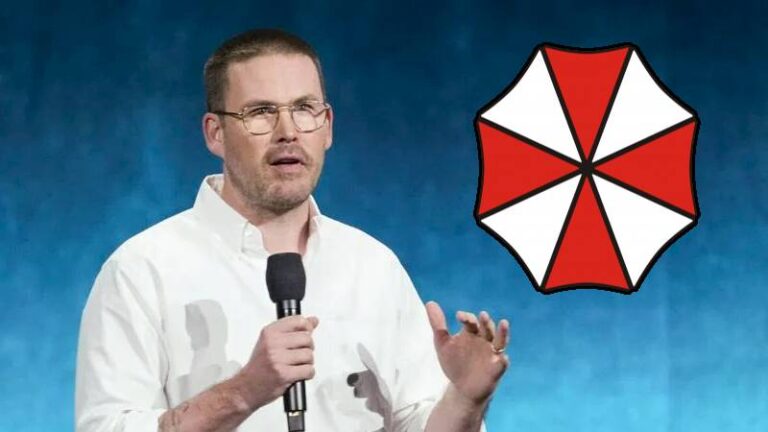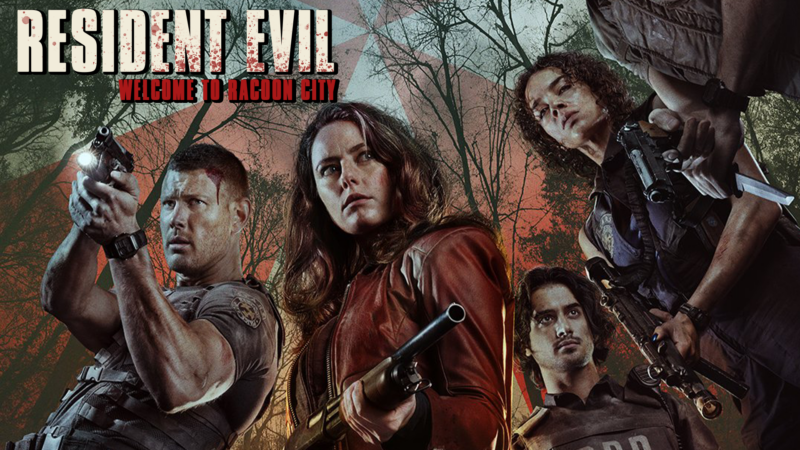
Much ado has been made regarding the accuracy and faithfulness of the latest live-action Resident Evil film, Welcome to Raccoon City, and as such it has been under a remarkable amount of scrutiny. After six films that (at best) paid loose homage and little else, could this movie finally be a chance to get it right? After seeing it for myself I can confidently say — sort of.
Mashing together the events of both Resident Evil 1 and 2, Welcome to Raccoon City aims to finally adapt some of our favorite Biohazard adventures, setting its roots firmly in game lore and events. Bouncing back and forth between the two stories sees us follow both the S.T.A.R.S. Alpha Team investigation into the Spencer mansion, as well as Leon and Claire’s fight for survival inside of the Raccoon City police station, with the two eventually crossing paths. It’s a daunting task, and the film had its work cut out for it from the word go; combining what is in total about 12-15 hours of video game story is a tough job for just under two hours of screentime. It makes a herculean effort, but sadly collapses under the weight of trying to just do too damn much in one story.
Set all the way back in the game’s origins of 1998, our scene is laid in the titular Raccoon City, characterized here as a dying ghost town. Umbrella Corporation, a pharmaceutical giant that was founded in the town decades prior, uprooted its base of operations some years ago and left the city a rotten husk without the lifeline of industry the company had provided. It’s an interesting take on Umbrella, which in the games (and the other films) was always shown as nothing but bright and cheery on a public level, to instead characterize it as a more parasitic organization; sucking up the lifeblood of a location before leaving it for dead and moving on.
Unfortunately, things are looking even grimmer, as the city’s townsfolk have been falling mysteriously ill over the past few weeks, with it all coming to a head tonight. The stage is quickly set with Claire Redfield (Kaya Scodelario) arriving back in town for the first time in years, in order to show her brother Chris (Robbie Amell) evidence she’s collected regarding this sickness — just as things start to get worse. The two stories of Resident Evil 1 and 2 start together here, and quickly split off in their own directions in order to cover their respective bases.
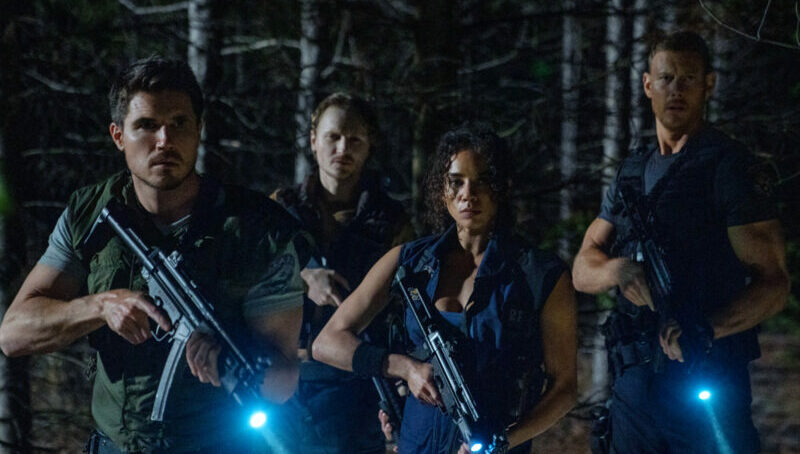
The Resident Evil 1 half of this adventure sees Chris Redfield, Jill Valentine (Hannah John-Kamen), Richard Aiken (Chad Rook), and Albert Wesker (Tom Hopper) explore the assumed abandoned Spencer estate, a mansion on the far outskirts of the city, in search of the missing R.P.D. Bravo Team unit. Stepping into the mansion, they find a lavish if macabre palace that quickly descends into a pitch-black fight for their lives as the living dead strike from the darkness in droves. In amongst the carnage, the mansion holds a deeper secret that only one member of their team is aware of, and uses this operation as a cover to exploit it.
The Resident Evil 2 half of the story sees Claire Redfield arriving at the R.P.D. station, just as the last two members of the force, chief Brian Irons (Donal Logue) and rookie officer Leon Kennedy (Avan Jogia) are attempting to escape as the desperate and sickly turn into the ravenous undead at the station’s front gate. Claire’s desperation to finally uncover definitive proof of Umbrella’s wrong-doing in the midst of the outbreak along with naive and out of his depth Leon trying to survive (with a side helping of just wanting to know what the fuck is going on) by her side drives them both deeper into the city’s secrets.
Both stories are told with a more or less accurate level of detail, quickly ticking off boxes of moments that are “supposed” to happen as per the games — with added story tissue in order to combine them into one event. As such, I think both could have made fine films on their own, but they don’t, however, handle being combined well at all. After a somewhat lengthy opening act, the film is forced to race through the events of both games at an almost breakneck pace while also trying to catch up with the original content that’s been added into the film in order to make the stories connect more directly. This, unfortunately, results in an adventure that is simply too bloated for its own good, caught between desperately wanting to be faithful to the general gist of both stories while simply not having enough time for any of it. There’s even a few story elements that bafflingly just aren’t explained, only ever insinuated, leaving the audience to piece them together for themselves, and it doesn’t feel like it’s because the film trusts our intuition, but more that the film is confident we aren’t that stupid and can rush along to the next scene. It quickly became clear that the film needed at least another hour for any of this to play out naturally, or the film should have been axed entirely in favor of a mini-series.
That isn’t to say that either “film” in this film is bad, as I genuinely found myself enjoying the adaptions of the two Resident Evil stories it’s telling — but on their own. There are some genuinely great moments here and there, and I often found myself wishing for more screentime that wasn’t there. The mansion feels legitimately great at times, with a few amazing moments of genuine fear and panic as the dead seemingly materialize out of the darkness around our heroes. The police station feels claustrophobic and anxiety-inducing, as it quickly spider-webs off from the gargantuan front hall into a honeycomb of smaller hallways and rooms. Both could have easily supported their own stories, but are forced to sit uncomfortably shoulder-to-shoulder here.
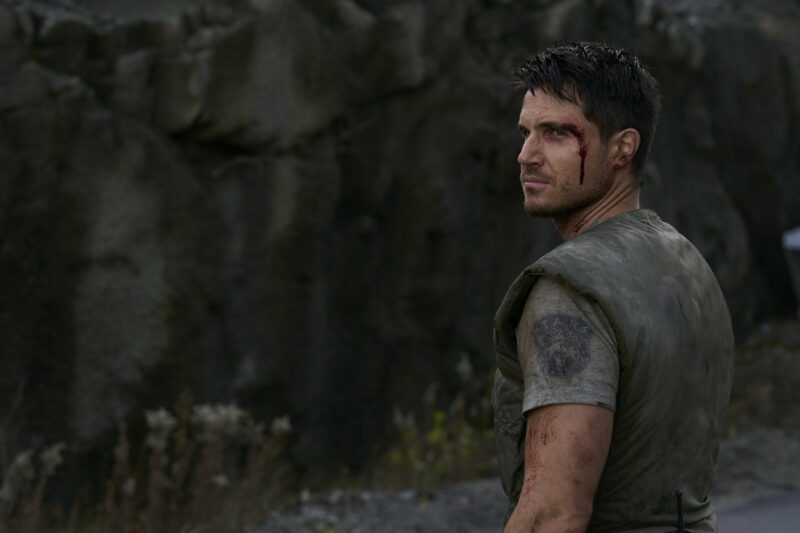
A few of the film’s original takes, such as what it does with zombies, are genuinely fantastic. Zombies have always been the bread and butter of the Umbrella era of the series, but outside of the grisly notes found throughout those stories (such as The Keeper’s Diary, which gets a quick shout-out), they’re generally treated the same way these creatures are in most media — corpses rising back to life in order to feed. In this film, however, they’re treated more as terminally diseased human beings, who cry and panic as their brains begin to convert over to the will of the virus. Hair falls out and eyes bleed, and slowly we see people go from delirious and sickly to ravenous and bloodthirsty. It’s genuinely sad and frightening all at once, and might be one of my favorite takes on such a rote creature at this point. Even creatures such as the zombie dogs have this level of tragic “rabies” coding, and I really loved it.
The characters themselves are probably going to be the most contentious part of the film for most die-hard fans, as almost none of them are particularly like their game counterparts. The best comparison I can make is 1993’s Jurassic Park, which flips almost every character’s personality from the novel like a switch. While Chris and Claire have only ever been portrayed (admittedly in the less than an hour of screentime they’ve ever had together) as loving and caring for each other in the games, they start this story more or less estranged and bitter with each other. Wesker and Jill see perhaps the biggest 180 from their game counterparts, and while I appreciate what they tried to do (especially on Wesker’s end), I think they both stumble over that same ‘too much to do and not enough time to do it in’ problem the movie has as a whole.
I’m going to assume that you’re reading this with some knowledge of the games and that you already know Wesker’s character to a degree. While he still goes through those same basic motions here, his reasons for and execution of those motions is completely different, and it almost works. Wesker and Jill’s arc together (no, they aren’t dating like early leaks suggested, although it does feel like they may have been in an earlier draft) comes so, so close to working, but a baffling adjustment to the finale of both character’s arcs completely undermines it. Honestly, if I have one serious complaint with this film, this specific moment between the two of them is it.
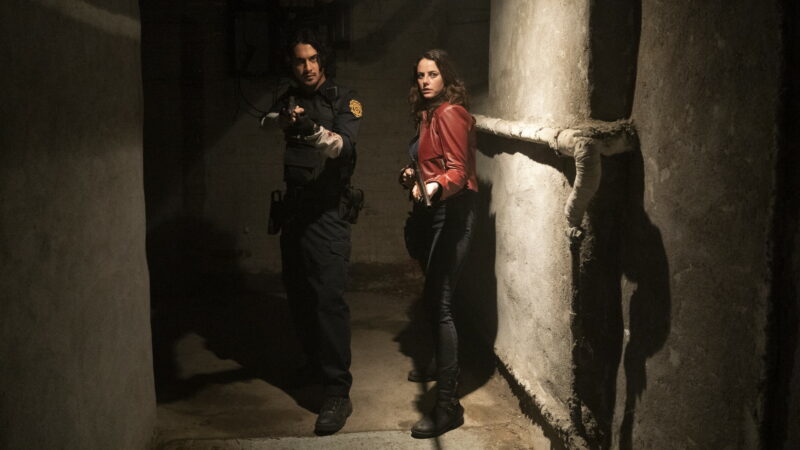
Leon astonishingly comes out on top as easily being the film’s most likable and fun character, embodying the out-of-depth rookie with a charm and charisma that outshines every other member of the cast. While the film maybe leans a little too heavily on the rookie aspect (and a few of his ‘comic relief’ moments fall a bit flat), I genuinely enjoyed both Jogia’s performance and the character’s arc as a whole. It makes me extremely hopeful we get to see him travel to a lonely and rural part of Europe in a future film.
Along with all of this is of course the film’s heavily promoted dedication to accuracy. From sets and key items to specific moments and even dialogue, there’s a nutso amount of game (and more) content woven into this film. If they have to use a set of keys, why not make them the card house keys from RE2? If Wesker’s going to use a pistol, why wouldn’t it be his Samurai Edge with flashlight attachment? Locations such as the Spencer Mansion and R.P.D. main halls have been lovingly recreated as well (although all other areas bear no resemblance). Some of these cuts are also remarkably deep as well, with the most shocking being the integration of multiple elements of S.D. Perry’s 1998 The Umbrella Conspiracy novelization almost to a T.
That said, while yes, of the seven live-action Resident Evil films, it is 100% the most faithful any of them have ever been (which isn’t an especially high bar to clear, to be fair), the run time again causes issues with this faithfulness — and not in ways you’d expect. While the film takes liberties in order to gel the two stories together (and more than obviously set up future films), there are multiple places where I honestly wish they had taken more (as sacrilegious as that may sound). Multiple moments and characters simply do not have the time to shine that they need to integrate into the story in a way that feels like they need to be here, and ultimately feel like they shouldn’t be here. One character, in particular, has no business being in this already over-crowded film, and while they are little more than a cameo, it’s a truly awful cameo that does the character no justice whatsoever and undermines another character’s already heavily altered arc.
Overall, Welcome to Raccoon City is enjoyable for what it is, but it is hard to not be let down by aspects of it — especially as there’s evidence to how much better it could’ve been with just a little more time. While there are many heavy story and character alterations, only a few of them detracted from the overall experience for me, and I hope that any potential sequels can hopefully make good on explaining what exactly the point of those changes was. Don’t pin your hopes on this being a truly 1:1 adaption, because it absolutely is not that, but if you’re looking for a Resident Evil film that finally seems to at least be trying as well as being a fun, scary zombie movie, you’re in for an enjoyable, if flawed, time.
 (6.5 / 10)
(6.5 / 10)
Above Average
 (6.5 / 10)
(6.5 / 10)
